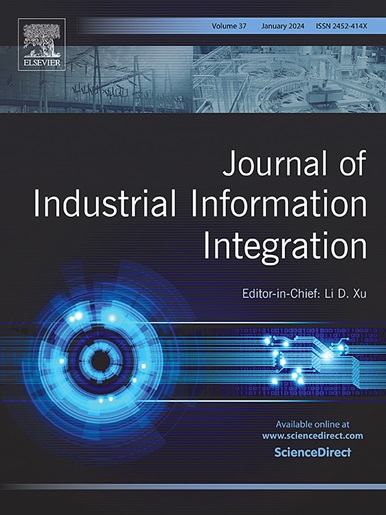从确定性到贝叶斯:通过事后不确定性调整预训练模型用于人机协同故障诊断
IF 10.4
1区 计算机科学
Q1 COMPUTER SCIENCE, INTERDISCIPLINARY APPLICATIONS
引用次数: 0
摘要
现有的故障诊断研究主要集中在提高准确率上,这意味着决策是由模型单独做出的。这可能导致模型在用户不知情的情况下提供不可信的预测。此外,存在黑箱效应和问责机制不完善的双重陷阱。人机协作模式承诺通过将人类纳入决策循环来解决这些问题,利用双方的优势来提供更安全的决策。为了建立这样的范式,需要一个支持,而预测不确定性是一个合适的候选,通常通过构建基于变分推理或深度集成的贝叶斯神经网络来捕获预测不确定性。然而,这些临时不确定性方法需要事先调整模型结构并从头开始训练模型,因此存在许多局限性:(1)为了不确定性估计而修改模型结构可能会牺牲准确性或任务特异性要求。(2)这些方法使参数数量成倍增加,导致训练成本显著增加。(3)当一个预先训练好的模型可用时,重新训练模型可能是一种资源浪费。因此,我们提出了一种基于拉普拉斯近似的事后不确定性方法,可以快速方便地将任何预训练模型从确定性模式切换到贝叶斯模式,避免了沉重的计算负担和预测性能的损失。通过域内和跨域场景下的校准和OOD检测任务验证了该方法的有效性,实验结果表明,该方法具有与预先方法相当甚至更好的不确定性估计质量。本文章由计算机程序翻译,如有差异,请以英文原文为准。

From deterministic to Bayesian: Adapting pre-trained models for human-computer collaborative fault diagnosis via post-hoc uncertainty
Existing fault diagnosis research focuses on improving accuracy, implying that decisions are made by the model alone. This can lead to models providing untrustworthy predictions without the user’s knowledge. Moreover, there are dual pitfalls of black-box effects and imperfect accountability mechanisms. Human-computer collaborative paradigm promises to address these issues by including humans in the decision-making loop, leveraging the strengths of both parties to provide safer decisions. To establish such a paradigm, a support is required and predictive uncertainty is a suitable candidate, which is often captured by constructing Bayesian neural network based on variational inference or deep ensemble. However, these ante-hoc uncertainty methods, which require prior adjustment of the model structure and training the model from scratch, suffer from many limitations: (1) Modification of model structure for uncertainty estimation may sacrifice accuracy or task-specific requirements. (2) These methods multiply the number of parameters and lead to a significant increase in training cost. (3) Retraining a model when a pre-trained model is available can be a waste of resources. Therefore, we propose a post-hoc uncertainty method based on Laplace approximation that quickly and easily switches any pre-trained model from deterministic to Bayesian mode, avoiding heavy computational burden and loss of predictive performance. The proposed method is validated by conducting calibration and OOD detection tasks in both in-domain and cross-domain scenarios, and the experimental results show that the proposed method has comparable or even better uncertainty estimation quality than ante-hoc methods.
求助全文
通过发布文献求助,成功后即可免费获取论文全文。
去求助
来源期刊

Journal of Industrial Information Integration
Decision Sciences-Information Systems and Management
CiteScore
22.30
自引率
13.40%
发文量
100
期刊介绍:
The Journal of Industrial Information Integration focuses on the industry's transition towards industrial integration and informatization, covering not only hardware and software but also information integration. It serves as a platform for promoting advances in industrial information integration, addressing challenges, issues, and solutions in an interdisciplinary forum for researchers, practitioners, and policy makers.
The Journal of Industrial Information Integration welcomes papers on foundational, technical, and practical aspects of industrial information integration, emphasizing the complex and cross-disciplinary topics that arise in industrial integration. Techniques from mathematical science, computer science, computer engineering, electrical and electronic engineering, manufacturing engineering, and engineering management are crucial in this context.
 求助内容:
求助内容: 应助结果提醒方式:
应助结果提醒方式:


